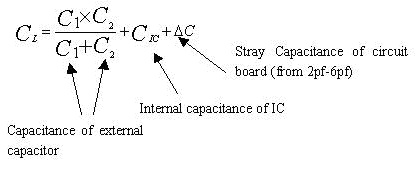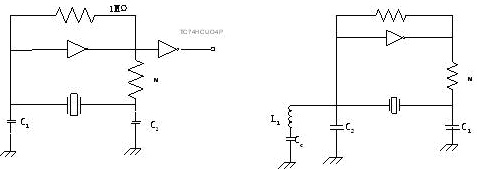1,NOMINAL FREQUENCY
The frequency assigned by the specification of the crystal unit,expressed in MHz or KHz.
2,FREQUENCY TOLERANCE
The permissible deviation from the nominal frequency at the reference temperature (usually 25℃), expressed in percent(%)or parts per million(ppm).
3,FREQUENCY STABILITY
The stability is the maximum allowable deviation from nominal frequency, referencing as 0 at 25℃, over a specified temperature range and is specified in ppm or % of nominal frequency. The parameter depends on the angle of quartz wafer cut as previously explained.
4,OPERATING TEMPERATURE RANGE
The range of temperatures over which the crystal unit shall function within the specified tolerances.
5,STORAGE TEMPERATURE RANGE
The temperature range over which the standard characteristics of the crystal unit can be maintained when the crystal unit is not in operation.
6,LOAD CAPACITANCE (CL)
Any external capacitance used in series with the crystal unit has become a resonant frequency determinant. Varying load capacitance will change the resonant frequency of the crystal, thus some standard load capacitance are used to fine tune the crystal into desired frequency in the application circuit.

7,SHUNT CAPACITANCE (C0)
The static capacitance between the electrodes, together with stray capacitances of the mounting system.
8,EQUIVLENT SERIES RESISTANCE (ESR.Rr,R1)
The resistance of the crystal unit alone at the resonance, frequency ESR is an indication of crystal impedance, measured in ohms.
9,DRIVE LEVEL
A function of the driving or excitation current flowing through the crystal. The drive level is the amount of power dissipation in the crystal. Expressed in mW or uW , maximum power is the most power device can dissipate while still maintained operation with all electrical parameters guaranteed. Drive level should be maintained at the minimum levels necessary to assure proper start-up and steady state oscillation, thus avoiding poor aging characteristics and crystal damage.
10,OVERTONE CRYSTALS
The crystal is usually operated at its fundamental frequency but can be operated Its 3rd,5th,7th,9th harmonics with slight adjustment to the circuit. Overtone crystals are especially processed for plane parallelism and surface finish to enhance its performance at the desired overtone harmonics vibration.
11,INSULATION TESISTANCE
Resistance between leads, or between leads and the case.
12,AGING
The change in operating frequency over a specified time period and is typically expressed as a maximum value in parts per million per year(ppm/year). This frequency change as a function of time is due to many factors; seal method and integrity, manufacturing processes, material type, operating temperatures, and frequency of operation.
13,APPLICATION CIRCUITS FOR DIFFIRENT CRYSTAL FREQUENCY RANGE
FUNDAMENTAL1 MHZ~25MHZ 3rdOVERTONE 27 MHZ~66MHZ

CL=(C1×C2)/(C1+C2)+Stray Capacitance
Stray Capacitance may vary from 2pf to 6pf
*NOTICE
1.The Rd in the circuit diagram is indispensable, when used in a C-MOS oscillation circuit, to keep the drive level within the specified value and to obtain stable oscillation frequency.
2.C1 and C2 should be used within the range of 10-31pF, If C1 and C2 are used below 10pF or above 30pF, oscillation may be easily affected by circuit condition, drive level may be increased or negative resistance may be decreased, thus resulting in unstable oscillation.
3.The layout for crystal oscillation circuits should be arranged as short as possible.
4.The stray capacitance between circuits and ground patterns should be reduced.
5.Crossing of crystal oscillation circuit patterns over other circuit patterns should be avoided.
6.Ultrasonic-wave cleaning may cause deterioration of crystal units.


